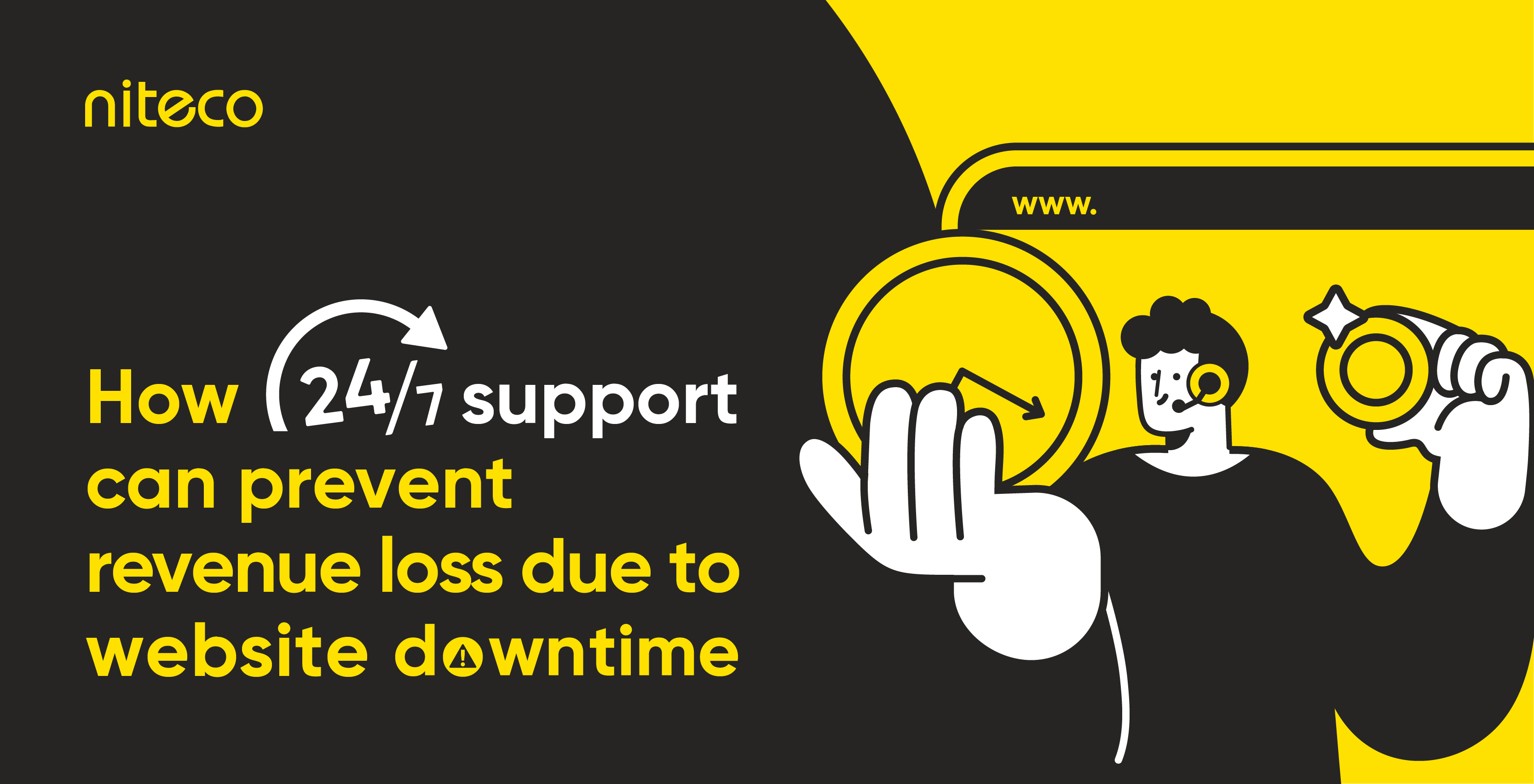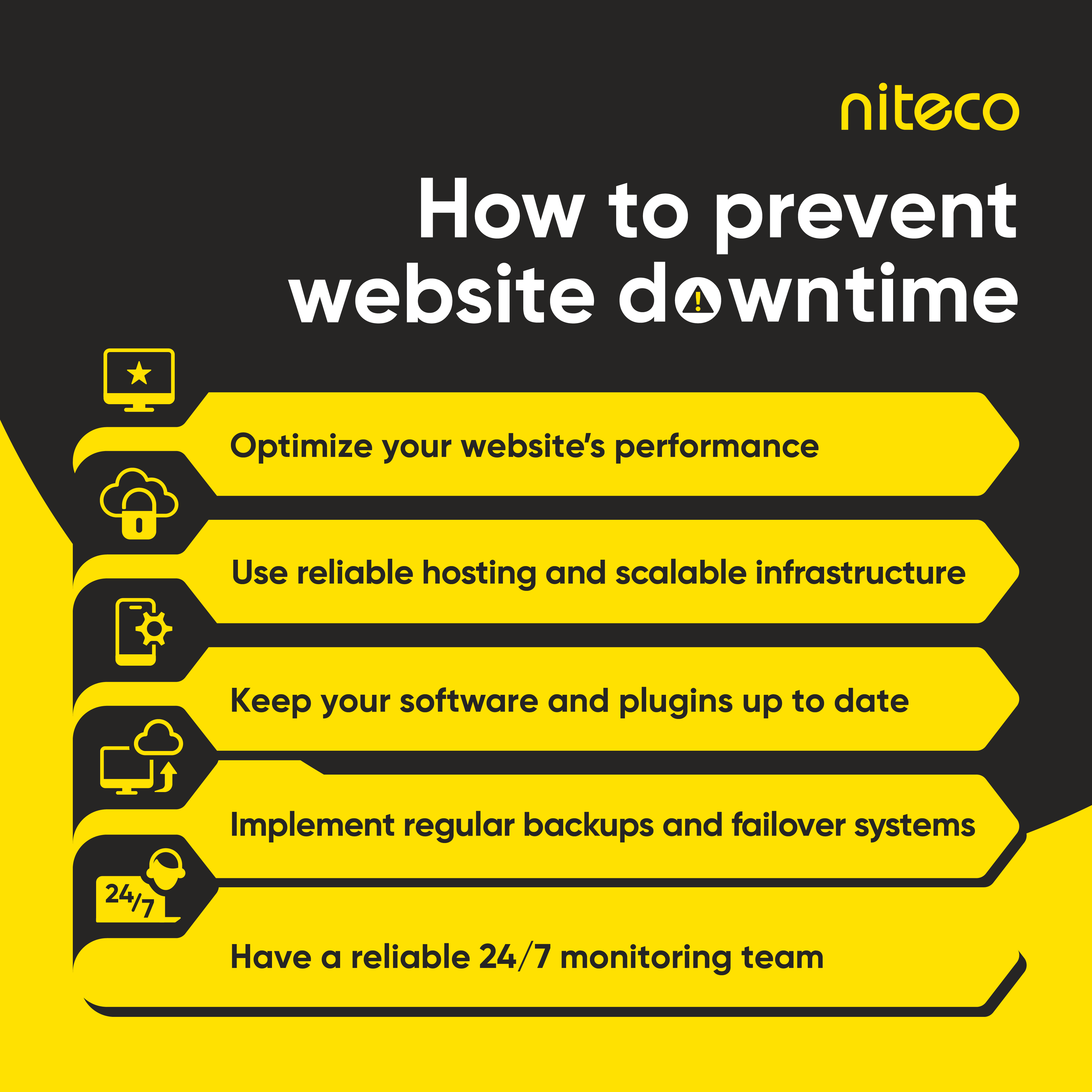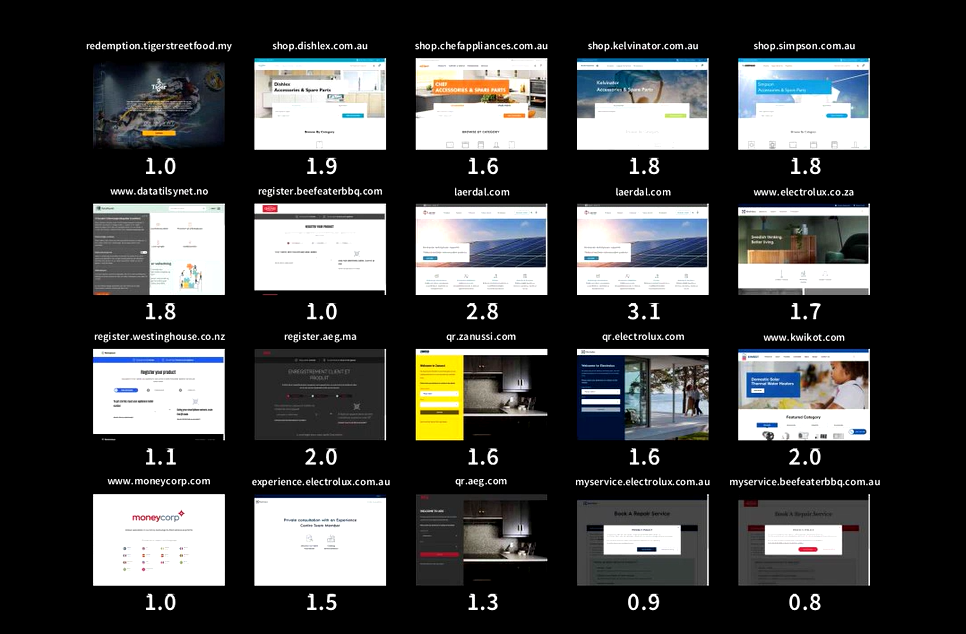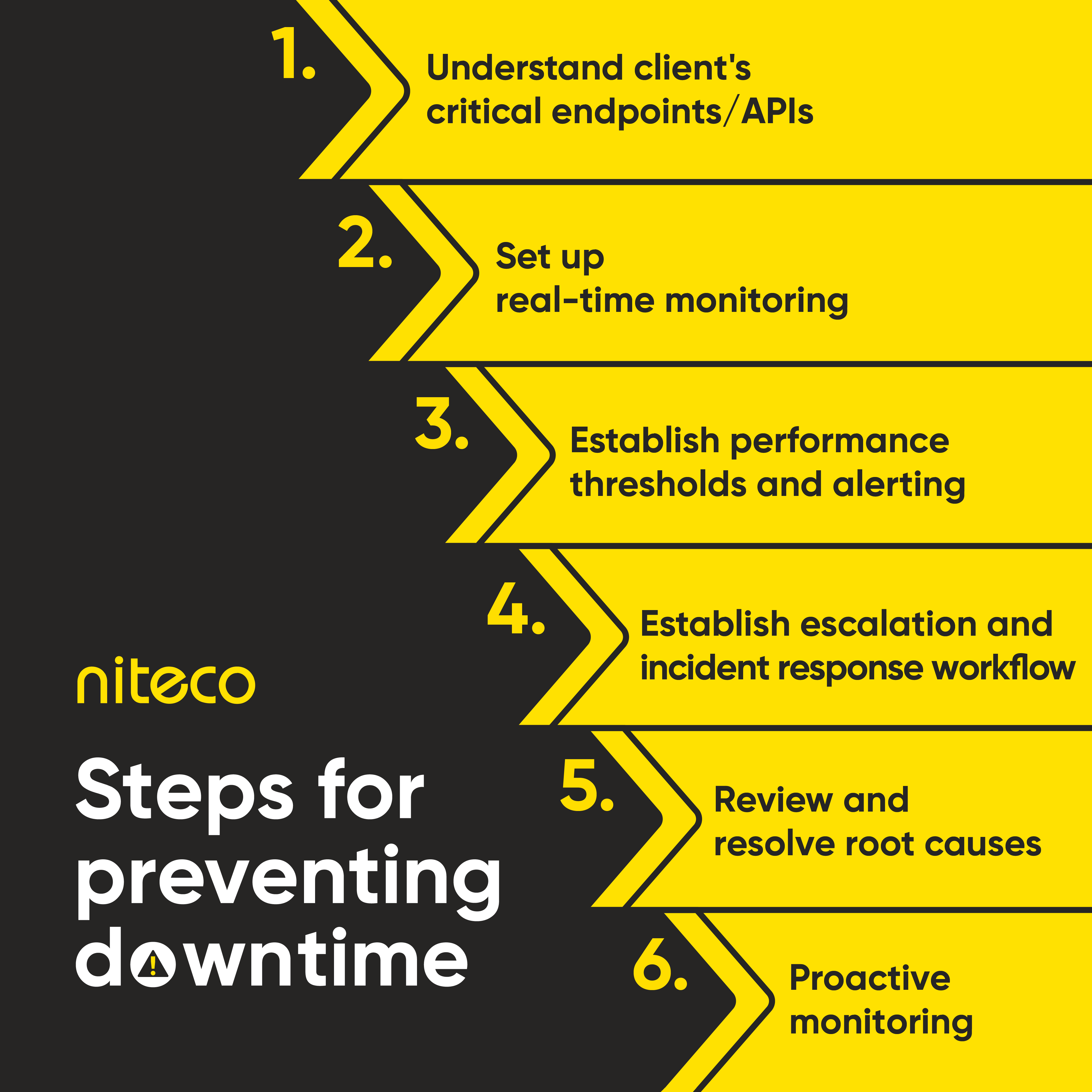You know that moment when a site refuses to load and you instantly close the tab? Now imagine that happening to your own site - while customers are trying to browse, buy, or trust you. Ouch.
Website downtime isn’t just a small glitch - it’s a major business blocker. Whether you run an Commerce store, a global platform, or any digital service that needs to stay “always-on,” even a few minutes of unavailability can lead to lost revenue, frustrated users, and a hit to your reputation.
So, how do you prevent website downtime before it drives your customers away?
This guide walks you through the real, actionable steps - from proactive site optimization to smart website downtime monitoring and full-scale 24/7 support - to help you keep your site online, fast, and reliable at all times.

Beyond monitoring and fixes, ensuring your site runs on an optimal tech stack is crucial to minimize downtime - a well-chosen stack handles traffic spikes and prevents performance bottlenecks.
Understanding the impact of website downtime on revenue
Website downtime doesn't just result in immediate sales losses, its ripple effects can be long-lasting.
Direct financial losses (likely huge amounts)
Every minute your website is inaccessible equates to potential lost sales, especially for businesses that rely heavily on online transactions. According to Gartner, the average cost of downtime is $5,600 per minute - though this can vary widely depending on company size and industry. Other reports suggest that losses can range from $2,300 to $9,000 per minute. For Commerce sites, that could add up to as much as $450,000 per hour during peak times.
Not yet convinced and think it might not happen to your business because you have a really good technical team? Think again, in 2019, Facebook (the high-tech firm everybody can be aware of) lost $90 million in revenue due to a 14-hour outage. It’s a clear reminder that even tech giants aren’t immune, and the financial impact can be staggering.
Bad user experience
Downtime doesn’t just hit your revenue - it hits your reputation. Studies show that nearly 9 out of 10 users are unlikely to return to a website after a poor experience. And if that poor experience happens during a purchase? Around 79% of shoppers say they’re less likely to buy from that site again.
In short, customers have little patience for broken or slow websites. A single outage could mean not only lost revenue today, but fewer returning customers tomorrow.
SEO and brand reputation damage
Search engines like Google prioritize websites that offer consistent uptime and a reliable user experience. Frequent or prolonged downtime can lead to decreased search engine rankings, making it harder for potential customers to find your site through organic search.
Moreover, downtime can hinder search engine crawlers from accessing and indexing your website content. If crawlers encounter your site during an outage, they may be unable to index new pages or updates, leading to reduced visibility in search results.
Beyond SEO, frequent downtime can erode customer trust and damage your brand's reputation. Visitors may perceive a website that is often unavailable as unreliable or unprofessional, which can deter them from engaging with your business or making purchases.
How to prevent website downtime
Preventing website downtime starts with being proactive, not reactive. By taking the right steps early, you can significantly reduce the risk of outages and their costly consequences. Here’s what every website owner should have in place:
- Optimize your website’s performance: Ensure fast loading speeds by compressing images, minimizing code, and using caching strategies. A lean, well-optimized site puts less strain on your server and reduces the risk of timeouts.
- Use reliable hosting and scalable infrastructure: Choose hosting providers that offer high availability and auto-scaling options, especially if your traffic spikes frequently.
- Keep your software and plugins up to date: Outdated software can open the door to bugs and security vulnerabilities that cause crashes or downtime. Regular updates keep things running smoothly and securely.
- Implement regular backups and failover systems: In case something goes wrong, having backups and automatic failover mechanisms in place can help you bounce back quickly with minimal disruption.
- Have a reliable 24/7 monitoring team: Website downtime can happen any time, of course you have tools to make it more aware, but they can replace human oversight. A dedicated team can detect issues, respond instantly, and make judgment calls that tools can’t. This round-the-clock support ensures that you’re not just alerted to problems - you’re solving them in real time.

The role of website downtime monitoring
Website downtime monitoring is crucial for detecting issues before they escalate. By continuously tracking your site's performance, you can receive real-time alerts about potential problems - allowing for swift, corrective actions before they affect your users or your revenue.
Best tools for website downtime monitoring
Several tools can assist in effective website downtime monitoring, offering 24/7 protection and insights into performance issues:
A professional audit service that evaluates your website's performance, Core Web Vitals, SEO health, and downtime risks. It provides actionable recommendations to strengthen your site’s reliability and prevent future downtime.

UptimeRobot
Offers 24/7 monitoring with features like SSL certificate checks and domain expiry alerts. Pricing starts at $8/month, with a free plan available.
StatusCake
Provides uptime, speed, and SSL tracking, alongside detailed diagnostics for in-depth website monitoring service coverage.
Pingdom
Caters to large businesses with comprehensive page speed tests and high-threshold plans ideal for traffic-heavy websites.
Site24x7
Offers a wide range of free monitoring tools, including defacement monitoring services for brand protection.
Datadog
Excels in Real User Monitoring (RUM) with detailed session replays, performance insights, and even SEO monitoring.
You’ve got the tools - but let’s be real, machines can only go so far. Downtime monitoring software gives you alerts, but without human eyes and action, issues can still slip through the cracks. That’s where 24/7 monitoring services step in to elevate your defense - let’s explore how they take your website uptime strategy to the next level.
Why 24/7 monitoring services are essential
Having a reliable 24/7 monitoring service isn't just a preventive measure - it’s a strategic advantage. By keeping an eye on your site’s performance around the clock, you can catch problems before they snowball. Real-time alerts and fast response times mean you’re solving issues as they arise - not hours later when the damage is already done.
And if you think you had a monitoring tool then you're safe, that’s not going to happen. A monitoring tool alone can tell you something’s wrong, but it can’t fix the issue. Without an actual team to take immediate action, you're still vulnerable. In fact, relying solely on tools often leads to double the cost - one for the tool itself, and another for the team you’ll eventually need to hire when things go south.
But when you have a 24/7 support and monitoring team in place, you’re not just detecting problems - you’re preventing website downtime altogether. That means no unexpected revenue loss, no frustrated customers, and no lasting damage to your brand reputation. It’s a proactive investment that pays for itself by helping you stay online, available, and trustworthy - at all times.
In shorts, 24/7 monitoring services can help with:
- Early detection: Spot problems before they become customer-facing.
- Quick response: Alert & Coordinate the right people, on the right channels, instantly.
- Visibility: Provide a complete picture of system health and performance trends.
- Continuous improvement: Provide insights that help teams improve stability over time.
Choosing the trusted 24/7 website monitoring team
To help our clients avoid the risks, we provide a dedicated team around-the-clock monitoring and incident management that focuses on 4 key areas:
- Application/ website uptime monitoring: We make sure the applications & websites, and all key services are up and running 24/7. If something goes down, we know within seconds.
- Infrastructure monitoring: We keep a close eye on server load, memory, and disk usage. If a server starts to struggle, we act before it crashes.
- Integrations: Many of the client's sites rely on external systems such as payment gateways, etc. We monitor those too, so any issues are caught early.
- Performance trends: It’s not just about catching things that are broken. We also look at how fast the site is running. If performance starts to dip, we alert the team so they can look into potential code issues or bottlenecks before customers notice.
Our approach to preventing downtime and ensure 24/7 support seamlessly
With years of experience supporting global brands like Heineken and Avensia, our 24/7 support and monitoring teams bring hands-on expertise to every challenge. We’ve developed a proactive, seamless approach to detecting and preventing downtime before it impacts your business.
Here’s how we implement our proactive monitoring strategy:
- Understand client's critical endpoints/APIs: Identify critical systems, applications, integrations, and endpoints that must be available at all times (e.g. payment gateways, customer-facing portals).
- Set up real-time monitoring: Implement 24/7 monitoring across infrastructure (CPU, memory, disk), integrations, APIs, and uptime for business-critical services.
- Establish performance thresholds & alerting: Define acceptable performance baselines and set up alerts for when metrics go beyond normal behavior (e.g., high CPU usage, integration or site timeout).
- Establish escalation & incident response workflow: Create a clear process for who handles what alerts are triggered - across L1, L2, L3 or 3rd party support.
- Review and resolve root causes: After each incident, coordinate with related parties and investigate what caused it to prevent recurrence
- Proactive monitoring: Monitor trends in response time, resource usage, etc., to spot early signs of degradation.

Our 24/7 success stories
We bring down time detection to under two minutes.
We keep uptime at 99.99%, even during high-traffic periods like Black Friday or seasonal campaigns.
We flag performance slowdown before they impacted sales, giving developers the chance to fix things before they became real problems.
Read more about our website monitoring service provided for Avensia and its 21+ clients.
Conclusion
Website downtime poses a serious risk to any business - from immediate revenue loss to long-term damage in brand trust and customer loyalty. But with the right strategies in place, you can stay ahead of the problem. By learning how to prevent website downtime and implementing consistent website downtime monitoring, you’re not just keeping your site online - you’re safeguarding your reputation and your bottom line.
Ultimately, investing in a 24/7 monitoring service isn’t just about reacting to issues. It’s about preventing them altogether. Ready to take the smarter path? Discover our 24/7 Website Monitoring Service and keep your business running smoothly, around the clock.
